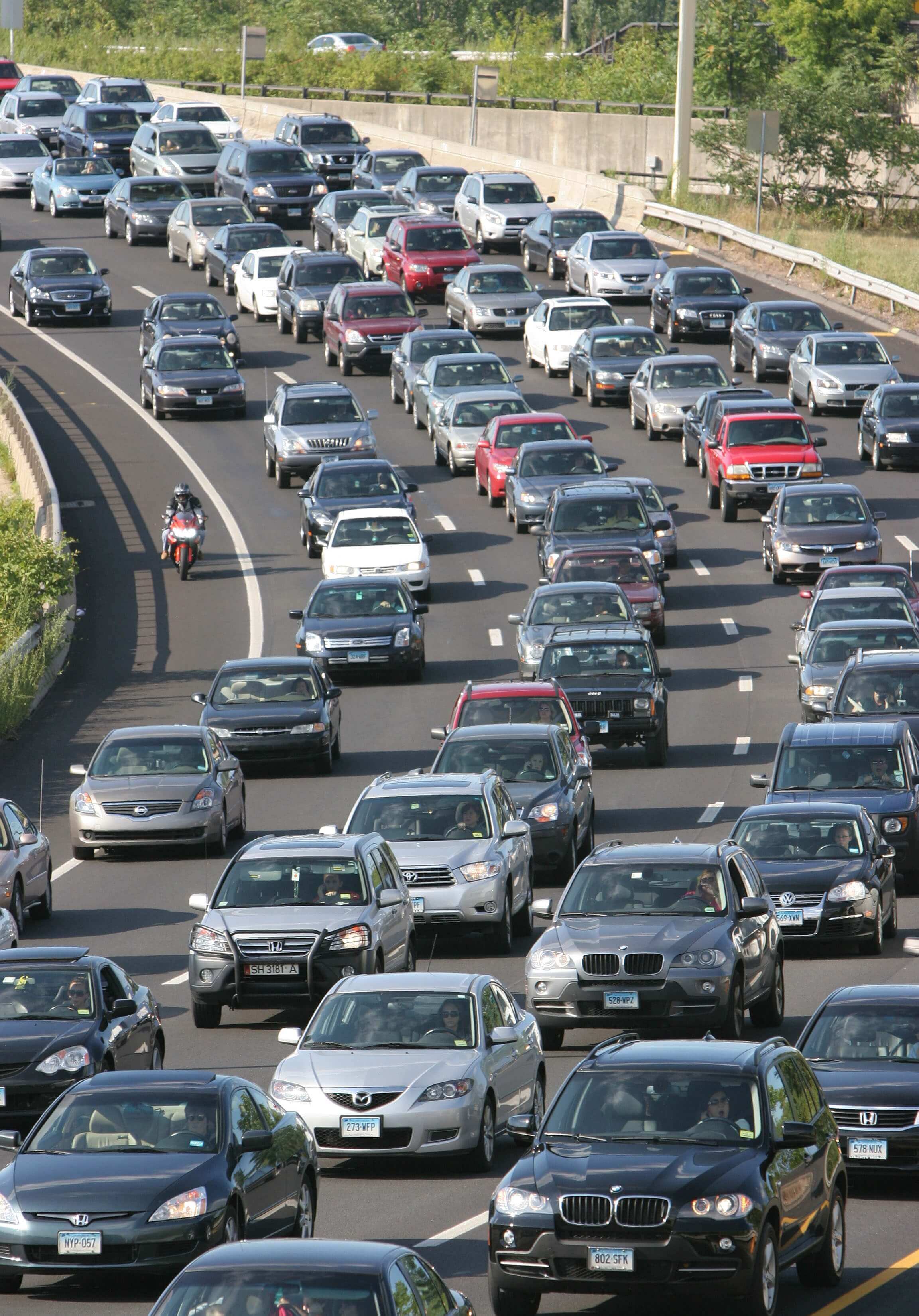Highway Robbery

Traffic congestion costs nearly 48 million hours in delays and $971 million in lost time and wasted fuel in Connecticut’s three largest urban areas: Hartford, New Haven, and Bridgeport-Stamford. That’s according to the 2011 Urban Mobility Report published by the Texas Transportation Institute.
Not surprisingly, Bridgeport-Stamford has the worst traffic congestion, accounting for nearly half of the delay hours and lost dollars among the three urban areas. A 22-mile stretch of I-95 in the Bridgeport-Stamford area is actually rated the seventh-worst commute in the country according to The Daily Beast’s “America’s 50 Worst Commutes” for 2011.
Feasible Solutions
How to unclog the transportation arteries? “The answer, typically, is get the drivers off the roads and onto the rails, which makes sense but is very expensive,” says Sen. L. Scott Frantz (R-Greenwich), whose district lies at the epicenter of Connecticut’s most traffic-snarled region. “Our capacity for more seats on trains has not gone up by much despite the fact that hundreds of millions of dollars have been invested in the new rail cars. Both New York and Connecticut will have a tough time affording much in the way of increases in capacity on Metro-North.”
Frantz suggests focusing on “some of the easier and more affordable fixes for improving throughput on I-95,” including:
- Improving on- and off-ramps to eliminate traffic slowdowns
- Instituting green light, righthand-turn-only requirements at the end of busy off-ramps during the morning rush hour
- Rerouting traffic during the afternoon rush hour before cars get onto I-95
- Preparing drivers better for sections of the highway where sun glare is a problem
- Rerouting the traffic flow at major merge points (Rt. 7 and I-95, for example)
- Educating motorists better about carpooling, mass transit, and times to avoid traveling on I-95
Trucks: Timing Is Everything
According to a 2011 draft report by the state’s now-defunct Transportation Strategy Board, trucks comprise 10-15% of the vehicles on Connecticut’s main interstates, adding significantly to congestion.
A solution, says Michael J. Riley, president of the Motor Transport Association of Connecticut Inc., would involve altering the time of day shipments are made.
Typically, says Riley, trucks carrying freight arrive at businesses in the morning, at the same time employees are coming in.
“New York invited trucks to come into New York City over the nighttime hours,” he says. “The truckers liked it, because they didn’t have the traffic to deal with. They got in, they got out. So there is capacity on our interstate highway system, but it’s between 10 pm and 5 am.”
Riley points out that such a plan would have to be a regional effort, not just something that one or two companies do. “If you’re a manufacturer out in Granby asking for your stuff to be delivered at 3 am, it’s not convenient for a trucking company to go up there for just one [delivery].”
RELATED
EXPLORE BY CATEGORY
Stay Connected with CBIA News Digests
The latest news and information delivered directly to your inbox.


